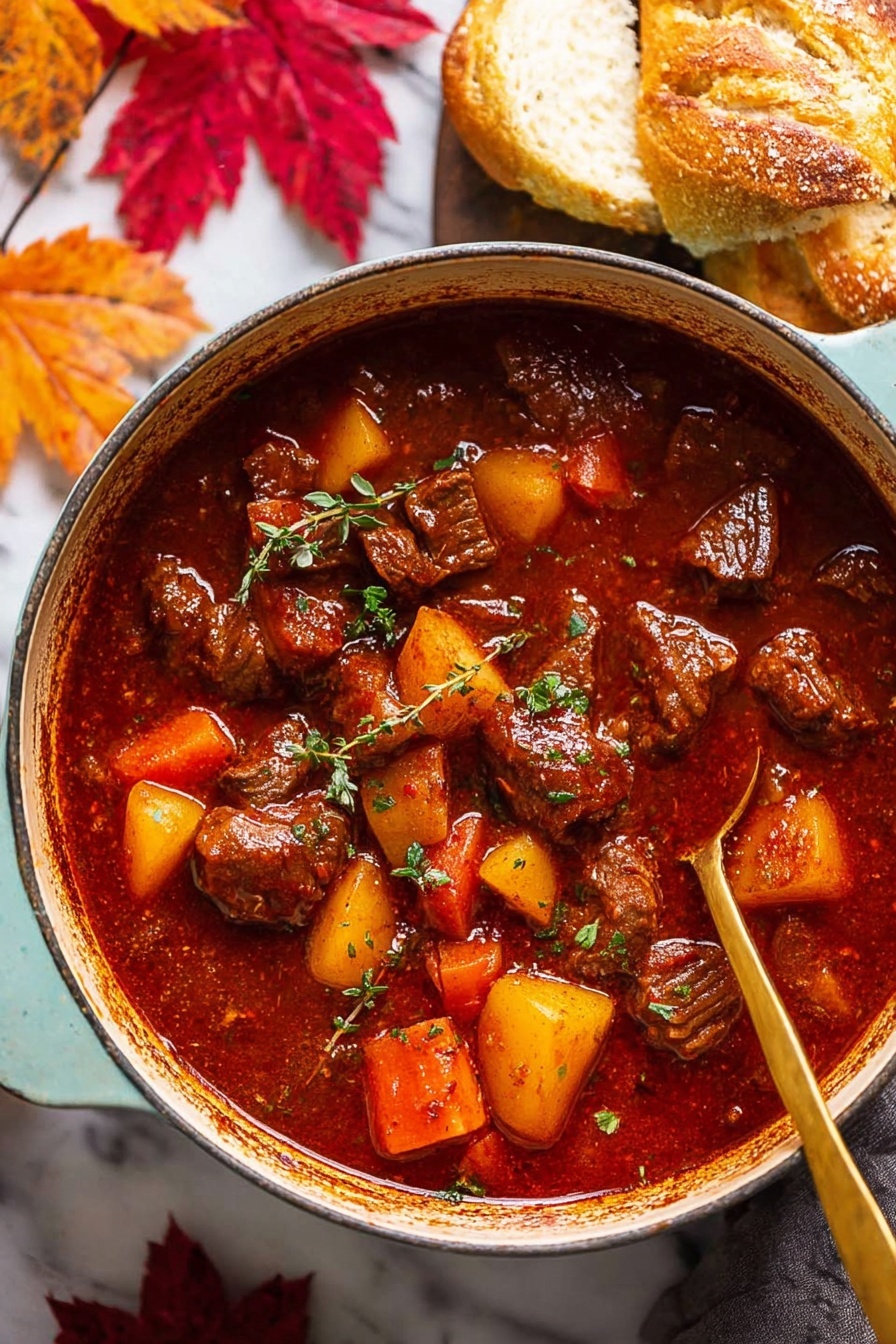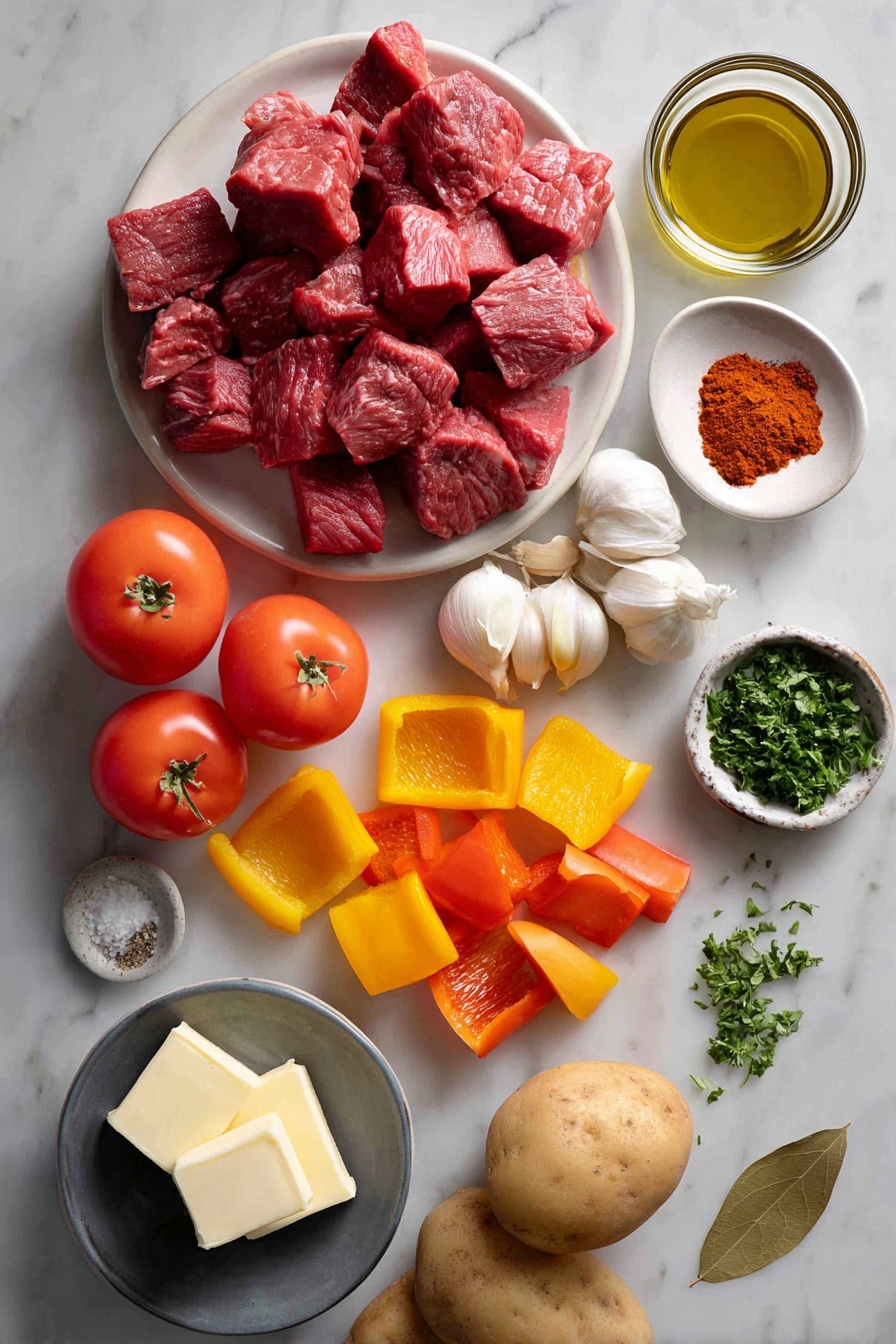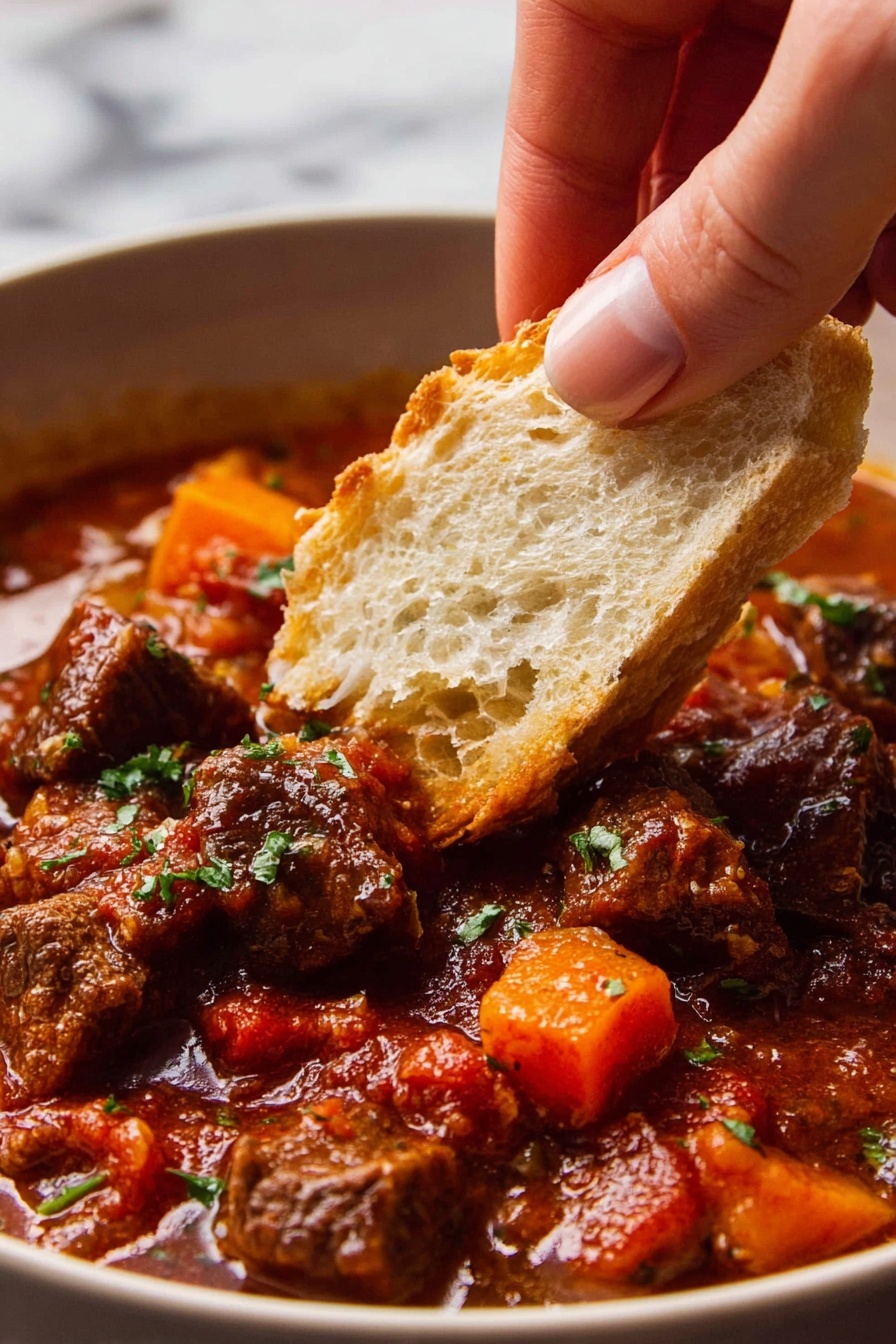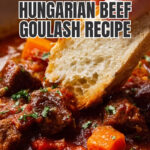There's something incredibly cozy about a big pot of rich, paprika-infused stew simmering away—this Hungarian Beef Goulash Recipe captures that comfort perfectly. Its tender beef, vibrant peppers, and earthy spices combine into a hearty meal that's both satisfying and soul-warming.
Jump to:
Why You'll Love This Recipe
I often think of Hungarian beef goulash as the ultimate “slow food” in a world that’s always rushing. This recipe is special because it’s not just about feeding you—it’s about layering flavors that take time to develop, producing a dish that feels like a warm hug on chilly days.
- Authentic Flavor: Using Hungarian-style paprika brings the signature smoky, mild sweetness that sets this goulash apart from other stews.
- Tender Beef Every Time: Slow cooking the chuck allows the meat to become meltingly tender without drying out.
- Vibrant Veggies: Capsicums and tomatoes add freshness and a light sweetness that balances the dish beautifully.
- Flexible and Family-Friendly: Whether you're cooking on the stove, in the oven, or slow cooker, this recipe adapts easily without sacrificing depth of flavor.

Ingredients & Why They Work
Every ingredient in this Hungarian Beef Goulash Recipe has a job that makes the whole greater than the sum of its parts. Choosing the right cuts of meat and fresh vegetables makes a huge difference, and the paprika really ties it all together.

- Beef chuck: Perfect cut for slow cooking—plenty of connective tissue breaks down, making the meat juicy and tender.
- Salt and black pepper: Simple seasoning to enhance all other flavors without overpowering them.
- Extra virgin olive oil and unsalted butter: The combo adds richness and helps sauté the onions and peppers to golden perfection.
- Brown onions: They add a subtle sweetness after caramelizing that deepens the flavor.
- Garlic cloves: Minced finely, garlic gives a warm, aromatic base to the stew.
- Capsicums (red and yellow): Bring color, crunch, and a gentle sweetness that softens during cooking.
- Tomatoes: They break down into a subtle tangy sauce that balances the rich beef.
- Hungarian-style paprika: The star spice—milder and smokier than regular paprika, it’s essential for authentic taste.
- Caraway seeds: Optional but traditional, adding a gentle earthiness with a hint of anise flavor.
- Bay leaf: Adds a subtle herbal aroma that melds all the flavors.
- Beef stock/broth: The stew’s liquid hero, combining all the aromatics and juices for a luscious sauce.
- Carrots: Their natural sweetness contrasts beautifully with paprika’s smokiness.
- Potatoes: Make the dish heartier and soak up that rich sauce perfectly.
- Parsley: Freshly chopped for that final pop of color and freshness.
Make It Your Way
I love playing around with this Hungarian Beef Goulash Recipe, especially swapping in different veggies or adjusting the cooking time depending on the tenderness of the beef. You can absolutely make it your own and still get delicious results!
- Variation: Sometimes I swap the beef chuck for beef cheeks—they add an even silkier texture but require a slightly longer cooking time.
- Diet-friendly tweak: For a lighter version, try swapping half the butter for olive oil and serve over cauliflower mash instead of potatoes.
- Spice it up: Though the recipe uses mild Hungarian paprika, a pinch of smoked paprika or a dash of cayenne can add an interesting smoky heat if you like it bolder.
Step-by-Step: How I Make Hungarian Beef Goulash Recipe
Step 1: Season and Brown the Beef
Start by tossing those beef cubes with half the salt and pepper—this jumpstarts the seasoning process. Then, heat olive oil and butter in a large ovenproof Dutch oven over high heat until the butter melts and shimmers. Pop in the beef and stir it around for about 2 minutes until the edges change from bright red to dull brown. Don’t worry if it doesn’t get golden-brown—that’s normal here.
Step 2: Sauté the Onions, Garlic, and Peppers
Before adding the beef, I like to cook the onions first in the oil and butter combination until just golden at the edges, usually about 6 minutes. Once the beef is in, stir in minced garlic, capsicums, and tomatoes. Cook this mixture for about 3 minutes until the tomatoes begin to soften and break down—this creates the rich base flavor for the stew.
Step 3: Add Spices and Stock, Then Slow Cook
Sprinkle in the paprika, optional caraway seeds, and bay leaf. Stir everything together for about 30 seconds—this step really wakes up the paprika’s aroma. Pour in the low-sodium beef stock, give it a good stir, and bring it to a simmer. Cover with the lid and transfer to a preheated 180°C (350°F) oven for 1.5 hours. The slow, steady heat is key to transforming those tough beef fibers into tender goodness.
Step 4: Add Root Veggies and Finish Cooking
After 90 minutes, the beef should be tender but not falling apart. Add in your carrots and potatoes, stirring gently. Return the pot to the oven for another 30 minutes, covered. This final stage softens the vegetables and makes the beef perfectly “fall-apart” tender. If you notice the beef isn’t quite there yet, just pop it back in for 10-minute increments until it’s perfect.
Step 5: Serve with a Sprinkle of Fresh Parsley
Ladle the goulash into bowls and garnish with fresh parsley for a pop of color and brightness. I love pairing this with bread on the side to soak up all that delicious sauce—trust me, no drop should go to waste!
Top Tip
From countless times making this Hungarian Beef Goulash Recipe, I’ve learned that patience and the right heat are your best friends. These tips help keep your stew perfect every time.
- Low and Slow Cooking: Whether using the oven or stove, keep the heat gentle to prevent drying out and encourage tender beef.
- Don’t Skip Browning: Even if the beef doesn’t get a deep crust, searing adds flavor and helps develop a rich stew base.
- Use Hungarian Paprika: It really makes a difference—ordinary paprika tastes quite different and will lack the authentic smoky-sweet character.
- Watch the Pot Liquids: Keep an eye on liquid levels, adding a bit more stock if it’s getting too thick before vegetables go in, to prevent burning.
How to Serve Hungarian Beef Goulash Recipe

Garnishes
I always go with a sprinkle of freshly chopped parsley—it brightens the deep, rich colors of the stew and adds a hint of freshness on each bite. Some friends love a dollop of sour cream on top to mellow the spices and add creaminess.
Side Dishes
Besides classic crusty bread or cheese bread for dunking, this goulash pairs wonderfully with buttered egg noodles or simple spaetzle for soaking up that luscious sauce. Mashed potatoes or a side of roasted root vegetables are also excellent if you want a hearty meal.
Creative Ways to Present
For holiday dinners, I like serving the goulash in mini cast-iron pots or bread bowls—that always impresses guests! Adding a swirl of sour cream and a sprinkle of paprika on top makes it feel a bit festive and extra special.
Make Ahead and Storage
Storing Leftovers
I store leftovers in airtight containers in the fridge, and honestly, this goulash tastes even better the next day once all the flavors have melded together. It keeps well for about 4 to 5 days without losing any of its richness.
Freezing
Freezing is a lifesaver! I portion it out into freezer-safe containers or bags and it freezes beautifully for up to 3 months. Just thaw overnight in the fridge before reheating.
Reheating
The best way to reheat is gently on the stove over low heat, stirring occasionally to prevent sticking. I add a splash of water or beef stock if it’s thickened too much. Microwaving works in a pinch, but slow reheating enhances the texture and flavor better.
Frequently Asked Questions:
Yes! Beef chuck is ideal because it becomes tender with slow cooking, but you can also use beef brisket, osso bucco, or beef cheeks. Just adjust the cooking time as some cuts may require longer to get tender.
Hungarian paprika is usually milder and has a smoother, smoky, and slightly sweet flavor compared to many regular paprikas that can be more bitter or harsh. For authentic goulash flavor, Hungarian or Hungarian-style paprika is preferred.
To make a vegetarian or vegan version, you can substitute the beef with hearty mushrooms or seitan and use vegetable stock instead of beef stock. Keep the paprika and veggies for authentic flavor, but the texture and richness will obviously be different.
All three methods work, but I personally prefer the oven method because it allows gentle, even heat and caramelizes the edges of the beef, adding deep flavor. The stove requires careful monitoring to avoid burning, and the slow cooker is convenient but won’t get that caramelization.
Final Thoughts
Making this Hungarian Beef Goulash Recipe is one of those cooking experiences that feels like a little gift to yourself and anyone you share it with. The rich aroma that fills your kitchen and the satisfying, tender bites remind me why I keep coming back to this classic. Give it a try—you might find it becomes your go-to cozy dinner, just like it did for me.







Leave a Reply